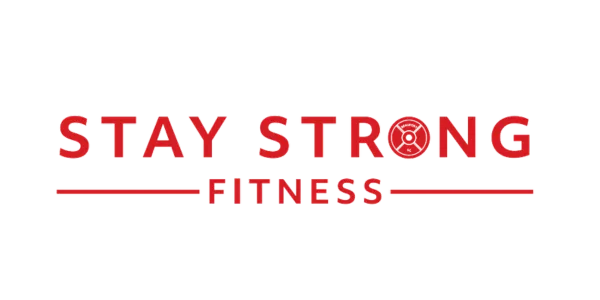BLOG

Struggling to Stay Consistent with Your Fitness Routine?
Have you ever felt excited to start a new workout routine—only to fall off track a few weeks later? Or maybe you’ve started a program but noticed your motivation fading over time?
You’re not alone. Staying consistent is one of the most common struggles people face when working toward their fitness goals. And in this blog, I’m not here to lecture you or throw a list of “shoulds” at you. I’m going to share exactly what has worked for me—and what we use at Stay Strong Fitness to help our clients stay on track, even when motivation is low.
We’ve narrowed it down to two simple strategies that work no matter what season of life you're in.
Why Motivation Fades
There are a lot of reasons why motivation drops: family stress, long work hours, poor sleep, taking care of kids, or just feeling burned out. The truth is, you’re going to hit rough patches—everyone does, including me.
I’ve been training for over 21 years, and I’ll be honest: the first 10 years were full of stops and starts. Even though I had experience from being a college athlete, I still struggled with consistency. Now, as a coach, I’ve seen the same pattern with many clients.
But once we started using the two strategies below, things changed. These tools have helped over 200 clients stay consistent, and they can help you, too.
Strategy #1: Set a Daily Minimum
What’s a daily minimum?
It’s a small habit you commit to every day—something so easy you’ll say, “Of course I can do that.”
Examples from Stay Strong Fitness:
Steps: If your goal is 8,000–10,000 steps a day, your daily minimum could be 4,000–5,000.
Time-Based Movement: Walk or stretch for just 10 minutes. That’s it—rain or shine.
Hydration: Drink at least 40 ounces of water daily (about three bottles for most people).
Focus on setting one simple daily minimum—a no-brainer habit you can commit to every day; you can always adjust it later as you grow.
Why It Works:
It’s not just about your body—it’s about your brain. Daily minimums keep momentum going. When life gets busy, a small win helps you stay positive and connected to your goals.
Strategy #2: Set a Performance Goal
What’s a performance goal?
It’s a goal based on what you can do—not how you look or what you weigh. This could mean doing more push-ups, lifting more weight, or running farther.
Why It Works:
Focusing on performance instead of the scale gives you something measurable and actionable to work towards.
How We Do It at Stay Strong Fitness:
Put the scale away—only use it once a month.
Choose one upper-body movement (like push-ups, rows, or pull-ups).
Choose one lower-body movement (like squats, deadlifts, or glute bridges).
Set a goal to reach in 6–8 weeks.
Examples:
If you’ve never done a push-up, aim for 10 knee push-ups in 8 weeks.
If you can barely squat the bar, aim to squat it with 10-pound plates on each side.
Tips for Setting Your Goal:
Be realistic: Don’t aim for 10 push-ups if you’re working on 2.
Be specific: Set a clear target—like reps or weight.
Make it challenging, but doable: It should stretch you, not break you.
Avoid comparison: Focus on your progress, not anyone else’s.
Your performance goal doesn’t have to involve weights. It could be:
Running 1 mile without stopping
Holding a plank for 45 seconds
Sitting comfortably in a 90/90 stretch
Getting up from the floor without using your hands
Performance goals keep your workouts fresh and give you something meaningful to work toward. And every time you hit one, your confidence grows.
Bonus Tip: Give Yourself Grace
This one is huge: You don’t need to be perfect to succeed.
No one is perfect—not even the best lifters or athletes. Life happens. You’ll miss workouts. You’ll slip up on nutrition. You’ll have days when you feel off. And that’s okay.
What matters most is that you don’t quit.
I’ve had plenty of 2–4 week stretches where I was inconsistent. That didn’t mean I failed—it just meant I had to realign my priorities.
Remember: nothing worth having comes easy.
Final Thoughts
If you’re feeling stuck, try this:
Set your daily minimum.
Choose one or two performance goals.
Give yourself grace when things get tough.
These simple steps build structure, progress, and momentum.
Stay Strong,
Sam
Owner & Coach at Stay Strong Fitness

